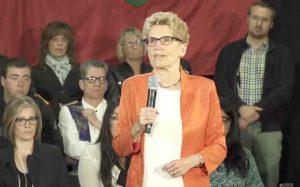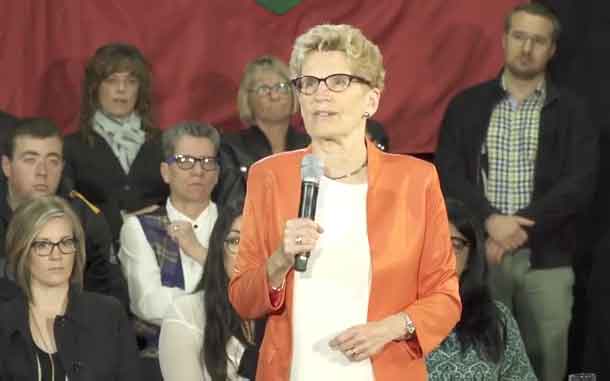
Despite tabling Ontario’s first balanced operating budget in a decade, there are signs the government plans to go right back to undisciplined spending
By Ben Eisenand and Charles Lammam: The Fraser Institute
TORONTO, Ont. – OPINION – Premier Kathleen Wynne’s government recently tabled Ontario’s first balanced operating budget in a decade. While it’s good to see the province finally bring its expenditures in line with revenues, there are worrying signs the government plans to go right back to the undisciplined approach that created Ontario’s deficit and debt problems in the first place.
A popular narrative from Queen’s Park is that factors beyond the government’s control (such as the global recession of 2009) are to blame for the mountainous run-up in debt in recent years.
But this narrative is, at best, an oversimplification. In reality, undisciplined spending also significantly contributed to Ontario’s fiscal problems. Between 2003-04 and 2015-16, program spending in Ontario (which excludes interest payments on government debt) increased at an average annual rate of 4.7 per cent. This greatly exceeds the annual average growth rate of the provincial economy (3.2 per cent), as well as other relevant metrics.
But had the government increased spending since 2003-04 at the same rate as growth in the provincial economy, Ontario would have run just one budget deficit (instead of 11). Under this scenario, the doubling in provincial debt simply would not have occurred.
To its credit, the government held program spending to an average annual growth rate of 2.2 per cent from 2014-15 to 2016-17.
And this brief period of comparative spending restraint coincided with strong revenue growth. Stronger economic performance and a booming housing market in the Greater Toronto Area, elevated transfers from the federal government – including equalization payments – and the sale of Hydro One shares helped produce a surge in revenues, shrinking the gap with expenditures. This allowed the government to finally balance the operating budget this coming year.
But serious fiscal challenges remain.
For starters, the factors that helped drive recent revenue gains likely won’t last forever. For example, after more than a decade of strong growth, federal transfers to the province are expected to fall or remain flat in the years ahead. And if Toronto’s red-hot housing market cools, this could affect the provincial government’s bottom line.
There are risks and pressures on the spending side, too. An aging population will put pressure on the health-care budget. And interest payments on government debt are expected to climb to more than $1 billion a month in the years ahead. Debt service payments are one of the government’s largest expenses, and their growth over time will make it harder for the government to balance its books.
Given these dark clouds on the fiscal horizon, and the fact that the province carries a debt burden close to 40 per cent of gross domestic product (a historically high level), the need for restraint is clear.
So it’s worrying that instead of restraint, the government has opened the tap, with spending set to grow 4.8 per cent this year – the largest increase since 2009. This surpasses the expected rate of economic growth (4.3 per cent) and is significantly faster than what’s needed to offset cost pressures from population growth and inflation (3.1 per cent).
The decisions in the last decade to increase spending faster than the provincial economy’s growth, and faster than was needed to keep up with a growing population and rising prices, contributed to Ontario’s dire fiscal problems. And when a nasty recession hit the province, the government faced spending levels it couldn’t afford. Big deficits quickly emerged.
The government is making the same mistakes and exposing Ontarians to the same risks again.
Ben Eisen is director of the Fraser Institute’s Ontario Prosperity Initiative and Charles Lammam is director of fiscal studies for the Fraser Institute. They are co-authors of Hold the Celebration: A Balanced Budget Won’t End Ontario’s Fiscal Challenges.
© 2017 Distributed by Troy Media
The views, opinions and positions expressed by all columnists and contributors are the author’s alone. They do not inherently or expressly reflect the views, opinions and/or positions of NetNewsLedger.






